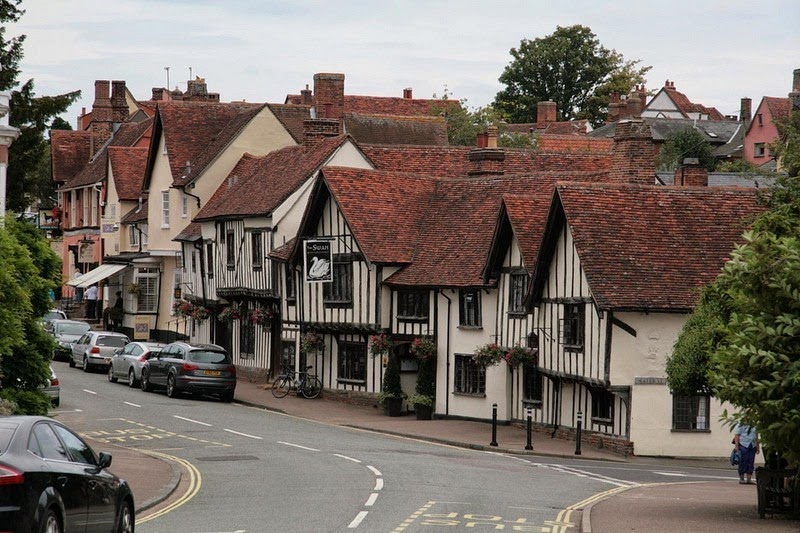There was a crooked man, and he walked a crooked mile.
He found a crooked sixpence upon a crooked stile.
He bought a crooked cat, which caught a crooked mouse,
And they all lived together in a little crooked house.
Remember this nursery rhyme? Some believe the poem, first published in the 1840s, was inspired by the once prosperous wool trading village of Lavenham, in Suffolk, England. To understand why, you just have to wander around the streets of this delightful little town, located about 70 miles northeast of London. Just about every other half-timbered, brightly painted houses here are noticeably crooked, leaning on to each other as if for support.
Lavenham is a medieval town with a rich history and founded on the wool trade. During the 15th and the 16th centuries, Lavenham was famous for the blue broadcloth made from its abundance of high quality wool. By the late 15th century, the town was among the richest in the British Isles, paying more in taxation than considerably larger towns such as York and Lincoln. The town’s prosperity and wealth of the era is clearly visible in the lavishly constructed wool church of St. Peter and St. Paul which stands proudly on a hill top at the end of the main high street. The church is excessively large for the size of the village and its tower standing 141 feet, is said to be the highest village church tower in Britain.
Other buildings also demonstrate the town's ostentatious wealth - the Lavenham Wool Hall and the Guildhall of the wool guild of Corpus Christi in the centre of the village overlooking the market square. It is said that when Henry VII visited the town in 1487, he fined several Lavenham families for displaying too much wealth.
The town grew so fast that many of the houses were built in haste with green timber. As the wood dried, the timbers warped causing the houses to bend at unexpected angles. Unfortunately, Lavenham’s good times didn’t last long. When Dutch refugees settled in Colchester began producing cloth that was cheaper, lighter and more fashionable than Lavenham's, the town’s cloth industry went bust. By the time the dried timber started twisting, Lavenham’s families had lost its wealth and with no money to rebuild their homes, Lavenham’s crooked houses were left as they were.
Lavenham has another association with nursery rhymes. In the late eighteenth century, the village was home to poet Jane Taylor, and it was while living in Shilling Street that she wrote the poem The Star, from which the lyrics for the nursery rhyme Twinkle Twinkle Little Star are taken.

Sources: Wikipedia / RAF Mildenhall / CDN via Unusual Places
























Comments
Post a Comment